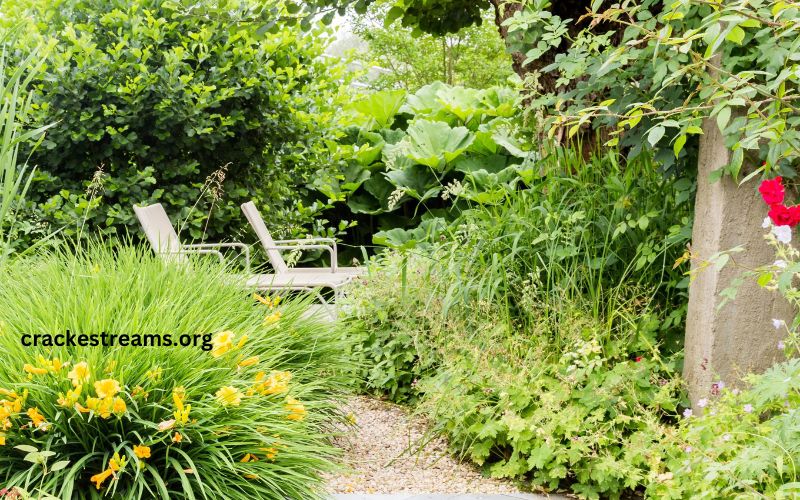When it comes to creating a unique and captivating garden, nothing quite compares to the allure of a savage garden. A savage garden is an extraordinary space that combines the beauty of nature with a touch of wildness. It is a place where untamed foliage, exotic plants, and intriguing creatures coexist harmoniously. In this article, we will explore the key elements that contribute to the success of a savage garden and how you can create your own captivating oasis.
The importance of soil and drainage in a savage garden
One of the fundamental elements of a successful savage garden is the quality of the soil and the efficiency of the drainage system. Since savage gardens often feature a diverse range of plants, it is crucial to ensure that the soil is well-draining and rich in organic matter. This will ensure that the plants receive the necessary nutrients while preventing waterlogging, which can lead to root rot and other detrimental conditions.
To create a thriving savage garden, start by testing the pH level of your soil. Most savage plants thrive in slightly acidic to neutral soil conditions. If the pH is too high or too low, you may need to make amendments to bring it to the optimal range. Additionally, consider incorporating organic matter such as compost or well-rotted manure to improve the soil structure and fertility.
Proper drainage is also crucial in a savage garden. This can be achieved by ensuring that the garden has adequate slopes, using raised beds, or incorporating gravel or stones in areas prone to water accumulation. By providing excellent drainage, you are creating an environment where savage plants can thrive and flourish.
Selecting the right plants for a savage garden
Selecting the right plants is essential to create a successful savage garden. These plants should be able to withstand harsh conditions, including extreme temperatures, drought, and poor soil quality. When choosing plants for your savage garden, consider their adaptability, resilience, and ability to attract wildlife.
Succulents, such as agaves and cacti, are excellent choices for a savage garden. They are known for their ability to store water in their leaves, making them highly drought-tolerant. In addition, their unique shapes and textures add visual interest to the garden. Other popular choices include ornamental grasses, wildflowers, and native plants that are well-suited to the local climate and soil conditions.
When selecting plants for your savage garden, think beyond aesthetics. Consider the ecological role they play in attracting beneficial insects, providing food and shelter for wildlife, and promoting biodiversity. By choosing plants that support the local ecosystem, you are creating a sustainable and thriving savage garden.
Designing a savage garden
Designing a savage garden is an art form that requires careful consideration of various elements. Unlike traditional gardens, savage gardens aim to mimic the untamed beauty of nature. When designing your savage garden, keep the following principles in mind:
- Embrace diversity: Incorporate a wide variety of plant species, each with its own unique characteristics. This will create a visually stunning and ecologically rich landscape.
- Create focal points: Designate certain areas of your savage garden as focal points by using bold and dramatic plants or structures. This will draw the eye and create a sense of intrigue and discovery.
- Play with textures and colors: Mix plants with different textures and colors to create a visually dynamic and captivating space. Combine soft grasses with spiky succulents, and vibrant blooms with muted foliage.
- Incorporate natural elements: Integrate natural elements such as rocks, logs, and water features to create a sense of wildness and authenticity. These elements will add depth and interest to your savage garden.
Remember, the goal of designing a savage garden is to create a space that feels untamed and mysterious. Let your creativity run wild as you design a landscape that is truly unique and captivating.
Maintaining a savage garden
While savage gardens may appear wild and untamed, they still require regular maintenance to ensure their beauty and longevity. Here are some essential maintenance tasks for a successful savage garden:
- Pruning and trimming: Regularly prune and trim plants to control their growth and maintain their desired shape. Remove dead or damaged branches to promote healthy growth.
- Weeding: Keep a watchful eye for weeds that may invade your savage garden. Remove them promptly to prevent competition for resources and to maintain the overall aesthetics of the space.
- Watering: Although savage gardens are designed to be resilient and drought-tolerant, some plants may still require occasional watering, especially during dry spells. Monitor the moisture levels and water accordingly, being mindful not to overwater.
- Pest control: Keep an eye out for pests that may damage your plants. Use organic pest control methods whenever possible to minimize harm to beneficial insects and the overall ecosystem of your savage garden.
By incorporating these maintenance tasks into your gardening routine, you can ensure that your savage garden remains healthy, vibrant, and visually appealing.
Common challenges and solutions in savage gardening
While creating and maintaining a savage garden can be a rewarding experience, it is not without its challenges. Here are some common challenges faced by savage gardeners and their solutions:
- Invasive species: Invasive plant species can quickly take over a savage garden and outcompete native plants. Regular monitoring and prompt removal of invasive species are crucial to maintaining the integrity of your savage garden.
- Extreme weather conditions: Savage gardens are often exposed to extreme weather conditions such as scorching heat, strong winds, or heavy rainfall. Choosing resilient and adaptable plants and providing appropriate protection when necessary can help mitigate the impact of these weather events.
- Soil erosion: Due to the diverse range of plants in a savage garden, the soil may become susceptible to erosion. Implementing erosion control measures such as mulching, terracing, or incorporating groundcovers can help prevent soil erosion and retain moisture.
By being aware of these challenges and implementing effective solutions, you can overcome obstacles and create a thriving savage garden that will be the envy of your neighborhood.
Unique features and elements to consider in a savage garden
One of the fascinating aspects of a savage garden is the opportunity to incorporate unique features and elements that add charm and intrigue. Here are some ideas to consider when creating your own savage garden:
- Pathways and walkways: Create meandering pathways through your savage garden to encourage exploration and discovery. Use natural materials such as gravel, stepping stones, or wood chips to maintain the wild and rustic feel.
- Wildlife habitats: Incorporate elements that attract wildlife and provide habitats for beneficial insects, birds, and other creatures. Install birdhouses, bat boxes, or bee hotels to create a thriving ecosystem within your savage garden.
- Water features: A small pond, a babbling brook, or a cascading waterfall can add a touch of serenity and tranquility to your savage garden. These water features not only provide visual interest but also attract a variety of wildlife.
- Sculptures and art installations: Integrate sculptures or art installations that blend seamlessly with the natural surroundings. These artistic elements can serve as focal points and add a touch of whimsy to your savage garden.
By incorporating these unique features and elements, you can create a savage garden that not only captures the essence of untamed nature but also becomes a sanctuary for wildlife and a source of inspiration for all who visit.
How to incorporate wildlife and attract beneficial insects in a savage garden
In a savage garden, attracting wildlife and beneficial insects is not only desirable but also essential for maintaining a balanced ecosystem. Here are some ways to incorporate wildlife and attract beneficial insects to your savage garden:
- Plant native species: Native plants are best suited to the local climate and soil conditions, making them attractive to native wildlife. Choose a variety of native plants that provide food, shelter, and nesting opportunities for birds, butterflies, bees, and other pollinators.
- Provide water sources: Install bird baths, shallow dishes, or small ponds to provide water for wildlife. Be sure to keep the water clean and refreshed regularly to prevent the spread of diseases.
- Create habitat diversity: Incorporate a range of plant heights, from groundcovers to tall shrubs and trees, to create diverse habitats for a variety of wildlife. Include plants that produce berries, nectar-rich flowers, or seeds to attract different species.
- Avoid chemical pesticides: Chemical pesticides can harm beneficial insects and disrupt the natural balance of your savage garden. Instead, use organic pest control methods such as companion planting, natural predators, or homemade insecticides to manage pests.
By following these practices, you can transform your savage garden into a haven for wildlife, where birds sing, butterflies flutter, and beneficial insects thrive.
Examples of successful savage gardens
To truly understand the beauty and potential of a savage garden, let’s explore some examples of successful savage gardens around the world:
- The Lost Gardens of Heligan, Cornwall, United Kingdom: These historic gardens were abandoned for decades before being restored to their former glory. Today, they showcase a stunning array of exotic plants, ancient woodlands, and wildflower meadows.
- The Australian Garden, Cranbourne, Australia: This expansive garden celebrates the diversity and beauty of Australia’s native flora. It features rugged landscapes, water-wise plants, and stunning displays of wildflowers.
- The High Line, New York City, USA: Built on a former elevated railway track, the High Line has been transformed into a unique urban oasis. It combines naturalistic planting, native species, and breathtaking views of the city skyline.
These examples demonstrate the endless possibilities and creativity that can be achieved in a savage garden. Take inspiration from these remarkable spaces as you embark on your own savage garden journey.
Conclusion
Creating a successful savage garden requires careful planning, thoughtful design, and ongoing maintenance. By focusing on the key elements such as soil and drainage, plant selection, design principles, and wildlife integration, you can create a captivating and thriving oasis. Embrace the untamed beauty of nature, unleash your creativity, and enjoy the enchantment of your very own savage garden.
CTA: Ready to embark on your own savage garden adventure? Start by assessing your soil and drainage conditions, and explore the unique plant species that thrive in your area. Remember to incorporate wildlife-friendly elements and let your creativity run wild. Create a savage garden that reflects your personality and becomes a sanctuary for both nature and yourself.




